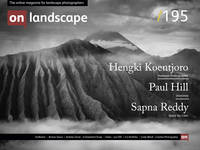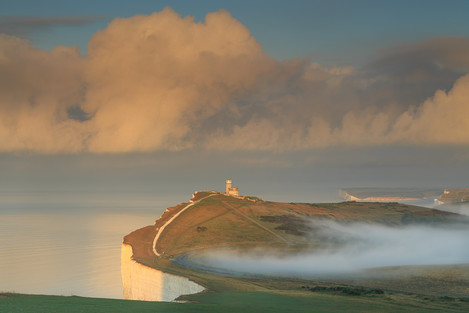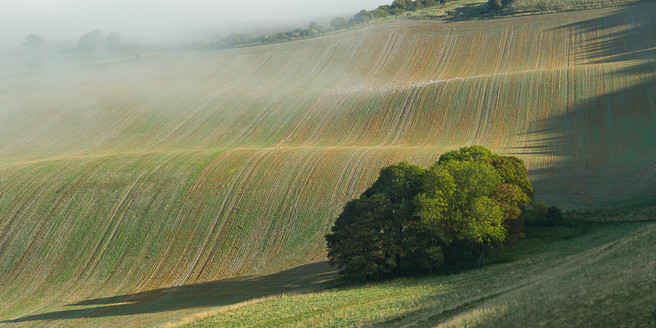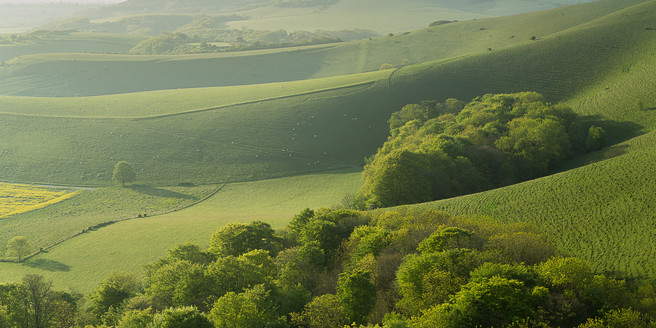Capture the essence

Andrew Turner
I am a Sussex-based landscape photographer in my spare time around my professional life as a Conservation Engineer. I have a passion for wild spaces. They bring a freedom to mind and thought away from the clutter of modern society.
Living in the ‘soft’ southern counties of England, it is all too easy to feel envy when turning the pages of photographic magazines and web sites to see dramatic mountainous scenery fall out of the page. With a passion for wild spaces, envy does have a habit of frequently knocking on my door.
Ignoring the obvious cries of “move house then”, I have turned to the wildest patch on my doorstep to seek inspiration in the South Downs. The Downs have always held a fascination with me – not just because the landscape forms an elegant and shapely group of hills, contrasting with the lowland of the adjacent Weald, but also through the human links, it has that echo back through history. The Chalk Downs of England are also unique – as few other countries can boast similar geology.
As a photographer, I have found it has taken time to unlock the South Downs. It is a subtle landscape that gives up its secrets slowly. Unlike the more obvious upland areas of the UK, the Downs form (almost!) one continuous and undulating hill of chalk with a steep escarpment facing north, a gentle back-slope facing south, and in the east, an abrupt meeting with the English Channel forming the chalk cliffs of the Seven Sisters and Beachy Head.
This pattern is really only interrupted by occasional river valleys that cut through the hills. They don’t form a deep range of hills and the ‘big views’ tend to be on the edges looking out beyond or across the Downs. Apart from the main river valleys, the land does not contain meandering streams or many hedgerows that help to create lead in lines for compositions. There are great swathes where it becomes a minimalist landscape and the land itself becomes the dominant feature rather than the objects that sit on it; a gentle curving grassland with shrub and arable fields with only a few trees, often shrunk and distorted, and occasional farm buildings (and plenty of sheep) to break the pattern. The skies are also ‘big’ here and the weather is influential in how the Downs look and feel. And away from the escarpment and the river valleys, there is little impression to emphasize the elevation of the hills. They are not tall hills – but certainly, they have dominance over the low-lying land of southern England.
Initially, I found it was all too easy to take images only to be sorely disappointed with the results. My early attempts tended to focus on long distant views from the escarpment – as they formed an obvious attraction. I have come to realise however that I was not really making a statement about how I felt about the Downs as a landscape – it was more about the view!
I have since explored the landscape much more and from my many tramps across the chalkland, I have learnt to pick up different characters and moods. The landscape is actually very simply and uncluttered, and I am often minded of the approach Ravilious took in emphasizing the shapes and patterns in the land. Undulations in the shape of the land can be echoed by cloud overhead when the weather and the light is right. The weather though can be a ‘trying’ and dominant element. A summer’s day in the low-lying Sussex Weald can turn out to be an early spring or Autumn storm on the Downs. But then the Downs can also feel like a desert in high summer; unbearably hot and dry with a heavy haze with only the distant sound of skylarks to remind you that life is still around. The shapely escarpment, much scarred by ancient tracks, remains an obvious ‘draw’, and I have learnt that the light – in both quality and direction - is crucial in emphasizing its features. Morning mists and low light are often very beneficial, but structured cloud formations can also be useful in echoing features and shapes on the ground.
I think these experiences have helped evolve my photographic style. Some of this has been about my own development by using the tools of a landscape photographer better than before, but equally, I think it is because I have come to know the downland landscape – picking up its different moods across the seasons, in different weather and through various types of light. I am seeing the South Downs more clearly and I hope I am expressing my thoughts much better.
On a pragmatic level, I have found the need for patience to find the right composition that captures what I am seeking, but then often I have had to continue being patient – and perhaps return at a different time and day - to wait for the light to work as I have wanted it to. So, not every journey on to the hills brings a successful image. But perhaps the most important aspect I have learnt with this is ‘so what?’ One of the advantages of landscape photography is it encourages you to get out there to experience what nature has to offer and to develop a friendship and a knowledge of it. I have been doing that far more and so have experienced the Downs at times and in weather conditions that would not have found me there before. When the light or the mood is not right for taking pictures, then so be it. It is often the experiences that I look back on – sometimes more so than the photographs. The camera though is a close companion throughout and helps me focus on seeing what the landscape has to offer and how it is speaking to me.
I feel there is still a journey to make with the South Downs. It remains ‘unfinished business’ and it has been a good exercise at reducing my mountain-envy!









